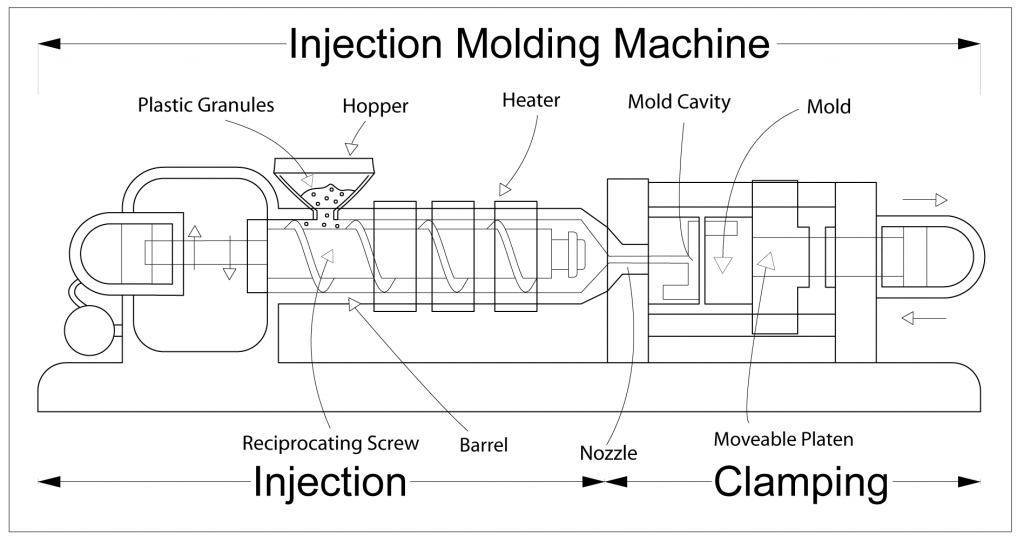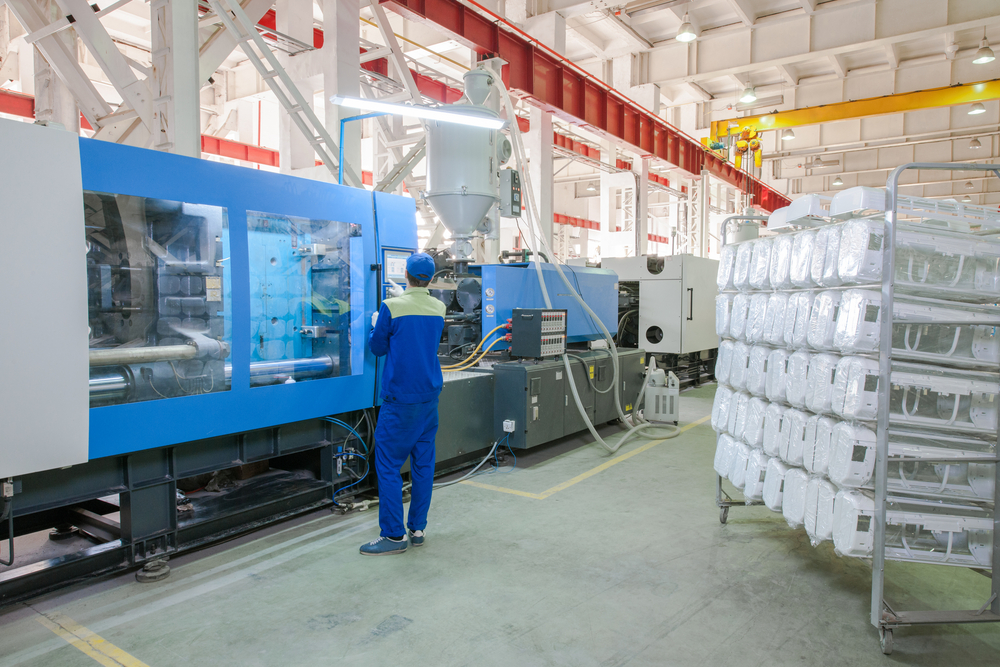Exactly How Plastic Injection Molding Guarantees Consistency and Accuracy in Production
Exactly How Plastic Injection Molding Guarantees Consistency and Accuracy in Production
Blog Article
Recognizing the Essentials of Plastic Injection Molding Procedures
Plastic shot molding works as a cornerstone of contemporary production, giving a methodical method to creating complex parts with accuracy. This procedure not only encompasses the essential actions of melting and infusing products right into mold and mildews yet additionally involves a nuanced understanding of various influencing elements, such as temperature and stress. As markets significantly require efficiency and top quality, the details of this method end up being a lot more essential. Checking out these vital components can disclose exactly how even small modifications can cause substantial renovations in manufacturing results, raising concerns regarding the potential for innovation in this recognized process.
What Is Plastic Injection Molding?
Plastic shot molding is a widely used manufacturing process that changes thermosetting and polycarbonate materials into exact and complex forms. This strategy is favored for its capability to produce high quantities of identical components with extraordinary accuracy, making it a vital method in different industries, including auto, durable goods, and clinical devices.
The process includes thawing the chosen plastic material and injecting it into a mold under high stress. The mold, developed to the requirements of the desired part, enables the liquified plastic to materialize as it solidifies and cools down. Once the material has solidified, the mold and mildew is opened up, and the finished component is ejected.
Plastic shot molding supplies numerous advantages, including decreased waste, consistency in manufacturing, and the ability to include detailed designs that may be challenging with other manufacturing methods. Furthermore, it supports a broad range of materials, each supplying special buildings that can be tailored for specific applications. As industries remain to innovate, plastic injection molding remains at the forefront, enabling the development of advanced items that satisfy progressing customer needs.
The Injection Molding Process
The shot molding procedure is an innovative method that includes a number of vital stages to create top notch plastic elements. At first, plastic pellets are fed into a warmed barrel where they are merged a viscous fluid. This molten plastic is after that injected under high stress right into a precision-engineered mold, which shapes the product into the desired kind.
As soon as the mold is filled, the plastic is permitted to cool and solidify, taking the form of the mold and mildew cavity. Cooling time is critical, as it impacts the cycle time and the final properties of the molded part. After adequate cooling, the mold opens, and the ended up part is ejected making use of ejector pins.

Products Utilized in Injection Molding
Different materials can be utilized in the injection molding procedure, each offering one-of-a-kind properties that cater to specific applications. The most commonly made use of products consist of thermoplastics, imp source thermosetting plastics, and elastomers.

Thermosetting plastics, like epoxy and phenolic resins, go through a chemical adjustment during the curing procedure, causing a rigid, inflexible framework. These products are optimal for applications calling for high warmth resistance and architectural integrity, commonly used in automotive parts and electric insulators.
Elastomers, consisting of silicone and rubber-based products, provide flexibility and durability. Their one-of-a-kind residential or commercial properties make them appropriate for applications that require flexibility, such as gaskets and seals.
Additionally, specialty materials like bio-based plastics and composites are acquiring traction for their ecological advantages and improved efficiency features, broadening the scope of injection molding applications in various industries. Comprehending the residential properties of these products is critical for picking the appropriate type for specific projects.
Benefits of Shot Molding
Injection molding sticks out as a very reliable manufacturing process that provides various advantages for producing complex get rid of accuracy. Among the most significant benefits is the capacity to produce elaborate styles that would be impossible or challenging to achieve with various other navigate to these guys methods (Plastic Injection Molding). The procedure permits tight tolerances and thorough attributes, guaranteeing premium components
In addition, shot molding is known for its quick production capabilities, making it an ideal selection for high-volume manufacturing. As soon as the mold is created, components can be produced promptly, decreasing lead times and boosting overall performance. This effectiveness not just reduces manufacturing expenses yet likewise gives an one-upmanship on the market.
The versatility of products used in injection molding even more enhances its appeal. A wide variety of thermoplastics and thermosetting polymers can be employed, enabling manufacturers to choose products that best satisfy their details requirements, consisting of flexibility, strength, and warm resistance.
Additionally, the procedure minimizes waste, as excess material can commonly be reused and recycled. This sustainability aspect adds to a minimized ecological influence, making shot molding a responsible manufacturing choice. Generally, the benefits of shot molding make it a recommended approach for many industries.
Aspects Influencing Item Top Quality
While numerous factors can influence product quality in injection molding, understanding these aspects is vital for attaining optimum outcomes. Trick facets consist of product choice, processing specifications, and mold and mildew design.
Material selection plays an essential function, as different polymers exhibit distinct homes that impact flowability, strength, and thermal stability. Insufficient material choice can lead to defects such as bending or insufficient dental filling.
Processing parameters, consisting of stress, temperature, and cycle time, need to be thoroughly managed. Variations in these setups can cause variances in part dimensions and surface area finish. Exceedingly high temperatures may create deterioration of the polymer, while inadequate stress can result in short shots.
Mold and mildew style is just as crucial, as it identifies the circulation of the molten plastic and the cooling process. Poorly created molds might result in unequal cooling rates, resulting in dimensional errors and residual stresses.

Final Thought
In final thought, plastic injection molding works as a vital manufacturing process that enables the efficient production of top quality elements. Mastery of the injection molding procedure, consisting of the understanding of materials and the influence of various variables on item high quality, is necessary for accomplishing optimal results. The benefits of this approach, visit the website such as cost-effectiveness and style flexibility, further emphasize its relevance across multiple sectors, strengthening its condition as a preferred selection for high-volume manufacturing.
Plastic injection molding offers as a cornerstone of modern-day manufacturing, giving a systematic method to producing intricate elements with precision.Plastic shot molding provides numerous benefits, including minimized waste, consistency in manufacturing, and the ability to incorporate complex styles that may be testing with other making techniques (Plastic Injection Molding). As industries proceed to introduce, plastic injection molding continues to be at the leading edge, enabling the advancement of advanced products that meet advancing consumer needs
The injection molding process is an innovative method that entails several vital stages to create top quality plastic elements.In conclusion, plastic injection molding offers as a crucial production procedure that enables the effective manufacturing of premium parts.
Report this page